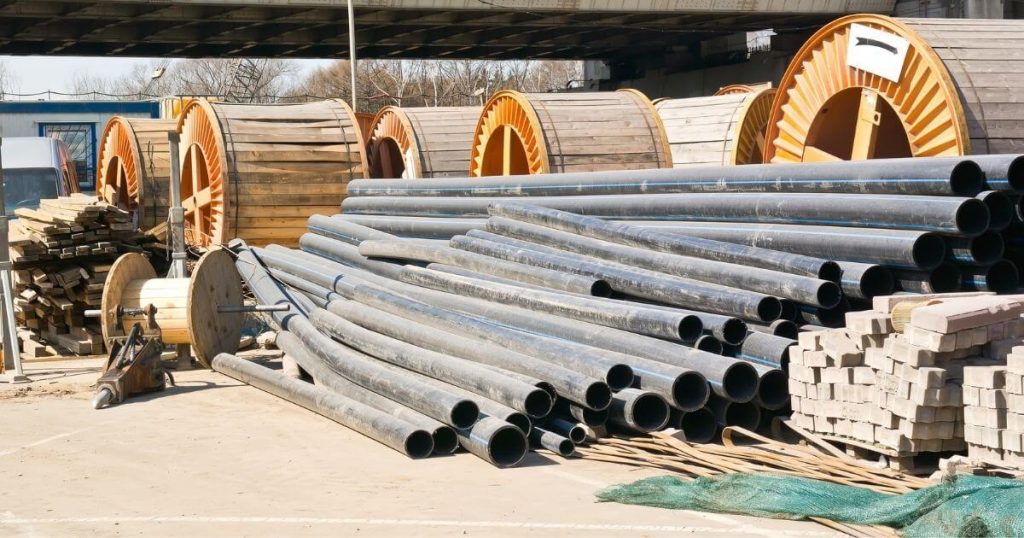5 Common Building Materials to Choose from when Creating a New House
Building a house is a considerable investment. Not only do you have to worry about the cost of materials and labour, but you also have to think about the long-term maintenance costs. Different materials come with pros and cons, so choosing wisely is essential. Here are five common home building materials and what you need to know about them.
Read also: Common Signs That You Need To Renovate Your House

1. Masonry
Masonry construction employs individual units (such as bricks) to construct structures typically held together with mortar. Historically, clay bricks were formed in a mould and kiln-fired. A concrete block reinforced with steel is now the strongest and most commonly used masonry unit. Clay bricks, concrete blocks, and stones are some of the most common masonry materials.
Masonry is both long-lasting and fire-resistant. This construction method can withstand compression loads, making it a good material for load-bearing walls. When reinforced with concrete or in combination with reinforced concrete, Masonry can support multi-story buildings and is a cost-effective option. While it is a powerful method for many types of construction, the quality of mortar and workmanship can make or break a masonry installation.
2. Concrete
Concrete comprises cement, aggregates such as sand or stone, and water. This mixture is poured into forms, which dry and harden to form everything from walls to supporting beams to sidewalks.
Concrete is both durable and robust, making it an excellent choice for the foundations of your structure. It can withstand the weight of the above structure and the moist soil that surrounds it.
Concrete can also be used to build whole structures. It lasts a long time and is resistant to various environmental threats. Builders can add steel rebars to concrete for reinforced strength.
Concrete buildings are also energy efficient, as they can passively transfer heat absorbed during the day and release it at night when it is cooler.
On the other hand, concrete necessitates a different set of skills to install than wood or metal. It is ideal to work with a reputable and experienced concrete team to make sure that your structure is built correctly and can withstand the test of time.
3. Steel
Structural steel is a popular building material frequently used in conjunction with concrete to create impressive and long-lasting structures. Its flexibility, sustainability, and versatility are some of the main reasons for its use and low cost. Steel, with its high strength-to-weight ratio, can often provide a solution where other materials are ineffective.
This is not to say that structural steel is always the best material for every situation, but by understanding its benefits, we can make the best use of it when needed. All buildings are made up of various materials, and selecting the best material for the job can mean the difference between winning the contract on price, completing the construction on time, providing a fit-for-purpose building, and lowering the environmental impact.
4. Wood
Humans have used wood to build shelters and structures for countless years. Despite centuries of technological advancements and the development of many synthetic materials, wood remains a popular building material.
Aside from its low cost, wood is popular because it is lightweight and easy to work with. It is also a good insulator that keeps your rooms warm while letting cold air exit.
While felling trees to build a structure may harm the environment, wood can be an environmentally friendly option if purchased from a responsible timber company. Because wood requires less water and energy to produce, it has a lower carbon footprint than other materials.
5. Glass (windows)
Since the invention of glass, clear windows have been used to cover small openings in buildings. They allowed humans to let light into rooms while keeping inclement weather outside. Glass is a very brittle material typically made from sand and silicate mixtures. Modern glass “curtain walls” can be used to cover an entire building’s facade. Glass can also be used in a “space frame” to span over a large roof structure.
Yes, every house has glass elements in the windows. However, glass is frequently used as a building material. It’s highly desirable because it makes indoor spaces light and bright, and when used as a significant structural component, it creates a dramatic home.
While it may not rank as high among low-cost building materials, it does have advantages for home construction, such as being lighter than other options. There are also numerous types of glass available, ranging from shatterproof to tempered glass and glass blocks.
Read also: How To Hire A Renovation Contractor in Toronto
What building material should you choose for your home?
The most important thing to consider when deciding on what building material you want for your home is the style of architecture, location, and budget. If you’re going to build a modern house in an urban setting, steel or glass materials may be a good choice. Or, wood might make sense if you are constructing a log cabin near a lake where there will not be any high winds that would damage the roofing material.
Regardless of which type of construction project you have in mind for your property, Servus Construction can help! We offer free consultations so call us today at (416) 871 – 5788, email us at info@servusconstruction.ca, or contact us through our website to get started!

